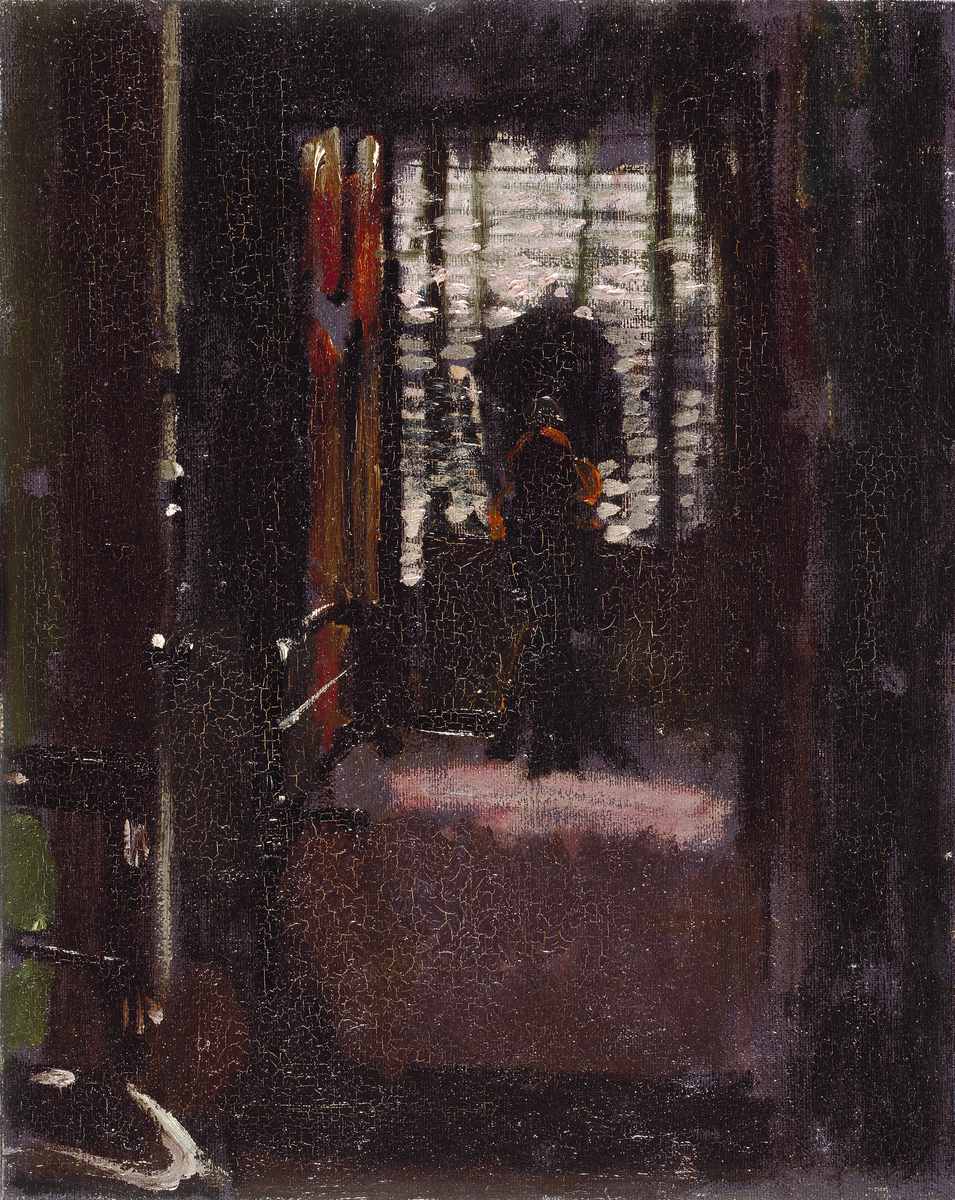Jack the Ripper's Bedroom
Walter Richard Sickert 1860 - 1942
Summary
A dark, shadowy view of a bedroom seen through an open doorway. A wooden chair is in the foreground, in what is probably the hallway, to the left of the open door. A dressing table and chair are just distinguishable beneath the filtered pink half-light coming through the horizontal slats of the blind that covers the window at the back of the room. The items of furniture are so indistinct as to make it conceivable that there is a bed, or a person sitting on the chair, although there is no one there. The bedroom is that of Sickert’s own lodgings at 6 Mornington Crescent, Camden Town, North London. His landlady had told Sickert that she suspected a previous tenant might have been Jack the Ripper, the infamous murderer, whose conduct had aroused her suspicions. In September 1907 one Emily Dimmock was discovered with her throat cut in her Camden Town lodgings. The 'Camden Town Murder,' as it became known, was luridly reported by the press. Sickert might have made an association between this murder and the similarly reported Jack the Ripper murders which had taken place in 1888 in Whitechapel, a notoriously rough area in the East End of London.
Display Label
Gallery text panel Tradition and Experiment Early Twentieth-Century Art 1900 - 1939. In Britain, the beginning of the 20th century coincided with the end of the Victorian age. Artists and designers experimented, challenging traditional ways of seeing and making; now trying to create a new art for a modern era. In painting, it was often traditional subject matter such as portraits, landscapes and interiors that would be tackled in new ways. The bustle and the brutality of urban life was an inspiration or something to escape from. Boundaries became increasingly blurred between design and decoration, painting and making and individual expression replaced academic authority. Art was made to be affordable and at a scale that would fit into ordinary homes. Some called the celebration of the modern into question after the horrors of the First World War. Traditional imagery was simplified or became childlike and slowly broke down into fragmented visions. Dream and chance tapped into subconscious anxieties and in 1939, world war intervened once again.
Object Name
Jack the Ripper's Bedroom
Creators Name
Date Created
1906-1907
Dimensions
Canvas: 50.8cm x 40.7cm
Frame: 59.2cm x 48.8cm
accession number
1980.303
Place of creation
England
Support
canvas
Medium
oil paint
Credit
Bequeathed by Mars Mary Cicely Tatlock
Legal
© Manchester Art Gallery


